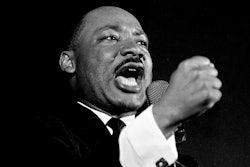Tracing Your Ancestry to Africa
DNA databases claim to allow people to trace their origins, but critics say the science is too imprecise to be valid
By Herb Frazier
Barbara Morrison-Rodriguez took three DNA tests in the past five years before African Ancestry in Washington, D.C., identified a genetic link between her and the Mende people.
Other tests did not find any matches to other African ethnic groups because of the limited size of the companies’ DNA databases, she says. “I wanted to know: What country, what tribe? That is what African Ancestry was able to tell me,” says Morrison-Rodriguez, a former faculty member at the University of South Carolina.
Geneticists can compare DNA, the substance in human cells that contains genetic information from an individual’s ancestors, to determine a person’s origin when written records lead to a genealogical dead end.
African Ancestry says it usually can trace at least one family bloodline to a specific region of Africa. It is that claim, however, that has skeptics wondering whether the company has acknowledged all of the flaws in an imprecise science.
The test to collect Morrison-Rodriguez’s DNA was painless and simple. She was sent a kit containing a cotton swab to remove buccal cells from the inside of her cheek. After mailing the kit back to African Ancestry, the company extracted DNA from the cells and compared it to its database of about 22,000 DNA samples.
Gina Paige, African Ancestry’s president, said the company’s DNA database contains genetic information from 30 African nations and includes 135 ethnic groups. The company created its database from genetic sequences of African tribes published in scientific literature. It also has collected DNA samples from volunteers in Africa.
For $349, African Ancestry tracks a person’s maternal or paternal lineage. For an additional $241, the company will test both sides of an individual’s bloodline.
The maternal side is the realm of mitochondrial DNA, a strand of genetic material found outside the cell nucleus and apart from regular genes. Mitochondrial DNA is passed only from mother to child. Mothers can pass it to their sons, but the sons can’t pass it to their offspring. When the maternal lineage of contemporary people is compared, scientists believe that they all can be linked to a common ancestor who lived in Africa about 100,000 years ago.
Y-chromosomes, found only in males, document a person’s paternal bloodline. But while the Y-chromosome test is relevant only for males, both sexes can submit to mitochondrial screening. The paternal lineage for African-Americans shows a higher percentage of European ancestry than does the mitochondrial DNA because European men in America often fathered children with women of African descent.
Paige says, “When we trace ancestry, we look at certain portions of the DNA that have been inherited maternally or paternally that don’t change over time, so they provide an informative record of a person’s history. We then compare it with the database and find the similarities.”
In a recent speech in Miami, Paige reported that Nigeria, Africa’s most populous nation, ranks first as the origin of the 3,000 Black people the company has tested. But surprisingly, tiny Sierra Leone, with a population that is 1/25th of Nigeria’s population, ranks second.
Morrison-Rodriguez said the comparison shows that the slave trade, which early on supplied the technical skill for rice cultivation in South Carolina and Georgia, placed a heavy toll on little Sierra Leone, which is about the size of South Carolina.
At the time of the American Revolution, coastal South Carolina had one of the highest slave populations in the Colonies. But in the 1820s, as the plantation economy turned to cotton and as new plantations were built farther west, slaves from coastal South Carolina and Georgia were shipped to Alabama, Mississippi, Louisiana and Arkansas, ultimately dispersing genes of South Carolina’s Colonial-era slaves all over the country.
Two of the three DNA tests that Morrison-Rodriguez took were inconclusive. One of them, prepared by Gene Tree in Salt Lake City, identified her bloodline as 82 percent sub-Saharan African, 12 percent European and 6 percent Asian.
The failed attempts by the other companies to match Morrison-Rodriguez’s DNA illustrate the imprecise nature of DNA testing.
Hank Greely, a Stanford University law professor and director of the Center On Law and Biosciences, said DNA tests, such as the ones conducted by African Ancestry, can only give a statistical probability of what tribe an individual comes from.
“It can’t give you certainty,” he said. “If the database included everyone in the world, it could give you that certainty.”
He said African Ancestry oversells its tests because it allows its customers to believe that it can tell them what tribe their ancestors came from.
Paige disagrees with Greely’s assessment, “When we find someone with the same exact mitochondrial DNA sequence, they share
the same maternal ancestry, and that is a scientific fact.”
— This article originally appeared in the Post-Courier. (Charleston, S.C.)
© Copyright 2005 by DiverseEducation.com


















